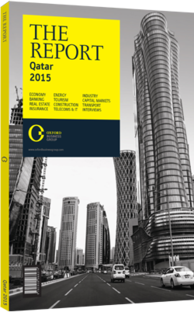Telecoms providers in Qatar build infrastructure networks
Developing telecommunications has been a priority for Qatar. Ooredoo, formerly Qatar Telecom (Qtel), led investment for several decades until the government sought to eliminate Qtel’s monopoly. Competition was introduced through legislations which increased private sector participation, leading to Vodafone’s entry. The World Economic Forum’s “Global Information Technology Report” for 2014 highlights the impact of these early investments, ranking Qatar first in “government procurement of advanced technology” and second for the importance of ICT to the government’s vision.
HIGH SPEED & RELIABLE: Rolling out a reliable high-speed network is the next major step. The country’s first National Broadband Plan, released in 2013, underscores the ambition to develop universal access to a high-speed national broadband network. State-backed Qatar National Broadband Network (Qnbn) has been given the mandate to develop this network. Key targets for Qnbn include maintaining speeds of at least 100 Mbps, connecting at least 95% of the population, and ensuring affordability by reducing prices to QR550 ($150) per year per connection by 2015, as well as offering equal access of the network to all operators.
While the initial target of 95% coverage of all households and 100% coverage of all business by 2015 may be pushed back to a later year, Qnbn has already connected several areas in Doha, including the West Bay area, the Msheireb Downtown Doha project, Barwa City and Barwa Commercial Avenue. Qnbn is also working with real estate developers to ensure that high-speed broadband networks can easily be installed in new developments. The agency has entered into various agreements with major real estate developments, health care, oil and gas, education and government to provide private networks.
DEMAND FOR DATA: Qatar’s two telecoms service providers are also focused on leveraging mobile and fixed-line broadband to drive revenue growth. Demand for data has followed international trends and has risen rapidly in recent years. Ooredoo has invested in meeting demand by enhancing its fixed and mobile broadband services. The company launched Qatar’s first 4G long-term evolution network in April 2013 and aims to provide cover to all populated areas of Qatar.
Fixed-line fibre-optic broadband has been another important area of focus for the company. Ooredoo is developing its own infrastructure, connecting some 175,000 homes and businesses so far. The company’s annual report for 2013 notes that global consulting firm Arthur D. Little highlighted Ooredoo’s crucial role in developing Qatar’s broadband facilities: “Qatar experienced the world’s fastest roll-out of a fibre-optic network in 2012, driven by Ooredoo’s nationwide investment.” Ooredoo also launched a service for small and medium-sized enterprises (SMEs) called Business Fibre, which enables SMEs to access high-speed broadband facilities. Vodafone, Qatar’s second telecommunications provider, launched 4G services on June 2, 2014, and they have now been rolled out across 60% of Qatar. The company currently also offers 4G roaming services in 23 countries.
WHOLESALE: Vodafone also has wholesale agreements in place with Qnbn to utilise their network to provide residential services in Barwa City and Commercial Avenue and West Bay. The company had taken a major step towards directly investing in Qatar’s broadband future through an agreement to buy a 100% stake in Qnbn in October 2014. Although the deal has since been cancelled, the move nevertheless underscores the company’s ambitions with regards to developing its broadband business segments.
The sector regulator has also devoted significant effort to catalysing demand in addition to influencing the development of digital content that leverages the infrastructure. For example, its recently established business incubation centre offers funding and mentoring to spur innovation. These investments should help to ensure Qatar’s continued transition towards a knowledge-based economy in the future.
You have reached the limit of premium articles you can view for free.
Choose from the options below to purchase print or digital editions of our Reports. You can also purchase a website subscription giving you unlimited access to all of our Reports online for 12 months.
If you have already purchased this Report or have a website subscription, please login to continue.

